Menosan
Menosan dosages: 60 caps
Menosan packs: 1 bottles, 2 bottles

Discount menosan 60 caps mastercard
Immunohistochemical localization of immunoglobulins, secretory component, lysozyme, and lactoferrin. The neonatal Fc receptor is expressed by human retinal pigment epithelial cells and is downregulated by tumour necrosis factor-. The subapical compartment and its function in intracellular trafficking and cell polarity. Direct interplay between Rab3b and the polymeric immunoglobulin receptor controls ligand-stimulated transcytosis in epithelial cells. Antigen storage compartments in mature dendritic cells facilitate extended cytotoxic T lymphocyte cross-priming capacity. Circulating specific antibodies improve systemic cross-priming by supply of complexed antigen to dendritic cells in vitro. Primary rat lacrimal cells bear acinar-like morphogenesis on reconstituted basement membrane and specific secretory component under androgen stimulation. A tubular endosomal fraction from rat liver: biochemical proof of receptor sorting by default. Androgen specificity of a response unit upstream of the human secretory element gene is mediated by differential receptor binding to a vital androgen response factor. Comparison of secretory element for immunoglobulin A with albumin as reference proteins in tracheal aspirate from preterm infants. Recognition of the tryptophan-based endocytosis sign in the neonatal Fc Receptor by the subunit of adaptor protein-2. Crystal structure and immunoglobulin G binding properties of the human major histocompatibility complexrelated Fc receptor. Effect of sialodacryoadenitis virus publicity on acinar epithelial cells from the rat lacrimal gland. A multivariate analysis of pathologic prognostic indicators in massive bowel most cancers. Serum concentrations of secretory IgA in pregnancies delivering at time period or preterm. Regulation of secretory element by glucocorticoids in primary cultures of rat hepatocytes. Estradiol and progesterone regulation of immunoglobulin A and G and secretory component in cervicovaginal secretions of the rat. Multiple features of immunoglobulin A in mucosal defense against viruses: an in vitro measles virus model. Neonatal Fc receptor for IgG regulates mucosal immune responses to luminal bacteria. IgG transport across mucosal barriers by neonatal Fc receptor for IgG and mucosal immunity. The degree of serum secretory IgA of patients with IgA nephropathy is elevated and related to pathological phenotypes. The heavy chain of neonatal Fc receptor for IgG is sequestered in endoplasmic reticulum by forming oligomers within the absence of 2-microglobulin association. Phagocytic cells such as macrophages and granulocytes are important effector cells of the innate immune system, whereas T and B cells constitute the adaptive immune system. B cells produce antibodies that may recognize pathogens via particular antigen-binding sites of their Fab areas. Thus, Fc receptors are an important link between antibodies which might be produced throughout adaptive immune responses and cells of the innate immune system. Most Fc receptors are structurally associated members of the Ig gene superfamily and encompass a transmembrane receptor containing two or three extracellular domains, a transmembrane region, and a cytoplasmic tail. Ligand binding happens in the extracellular domains of the chains, which can additionally bear signaling motifs in their cytoplasmic tail. However, activation via most Fc receptors depends on association with extra signaling chains such because the promiscuous FcR chains or chains that include canonical signaling motifs. Human leukocyte receptors for IgG (Fc receptors) are divided into three main classes, every with several variant varieties (Daeron, 1997; Nimmerjahn and Ravetch, 2011). It is constitutively expressed on monocytes and macrophages and inducible on neutrophilic granulocytes (neutrophils) after therapy with interferon- or granulocyte-colony stimulating issue. The construction, expression, and capabilities of Fc receptor (sub)types have been extensively reviewed by others (Nimmerjahn and Ravetch, 2011).
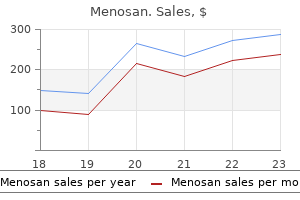
Order genuine menosan
The studies summarized above clearly illustrate the protecting potential of an IgA response even to a single epitope on the infectious agent offered that the epitope is uncovered in vivo. Furthermore, humans and anthropoid apes have developed a novel subclass of IgA, IgA1, which circulates at comparatively excessive concentrations predominantly in monomeric kind, whereas in mice and other mammals, the major type of systemic IgA more carefully resembles human IgA2 and circulates at decrease concentrations in polymeric kind. Table 3 summarizes the protective functions of IgA as revealed by studies in mice during which IgA, the J chain, or pIgR has been genetically deleted or in IgA-deficient humans. Although there are clear examples by which IgA-knockout mice (in which the C chain is genetically inactivated) are more sensitive to mucosal infections than their wildtype counterparts (Blutt et al. Remarkably, IgA-knockout mice also display alterations within the expression of different isotypes as nicely as immune response defects (Harriman et al. In humans two subclasses of IgA (IgA1 and IgA2) happen and monomeric IgA1 circulates at unusually high concentrations. The IgA1 and IgA2 subclasses present differences in their ability to interact with certain receptors and bacterial proteins (see below), in some cases as a result of variations in glycosylation. However, human IgA1 and IgA2, and the allotypes of IgA2, have few distinct organic properties; a notable exception is the susceptibility of IgA1 to bacterial IgA1 proteases (see Chapter 22). These disparities suggest that totally different IgA subclass responses could depend on various elements, together with the type of antigen and its molecular context, web site of induction (parenteral or mucosal), age of the topic, and whether they result from major or secondary antigen publicity. Serum IgA Ab responses often commence with pIgA and progress subsequently to the monomeric type (reviewed in Russell et al. The hinge region that hyperlinks Fab to Fc in human IgA1 possesses some unusual structural options which are reminiscent of mucin, together with the presence of O-linked oligosaccharides (see Chapter 17). The elongated hinge region of IgA1 confers larger flexibility on its Fab arms relative to these of both IgA2 and IgG (Boehm et al. The scenario in lagomorphs, which have genes for thirteen IgA subclasses with hinge regions starting from 6 to 21 amino acid residues in length, stays enigmatic. However, not all of these are usually expressed, their relative abundance and expression differ in several segments of the gut and during ontogeny (Spieker-Polet et al. Analysis of antigen�Ab complexes by two-phase liquid partition chromatography has shown that IgA1 and IgA2 complexes show completely different floor properties compared to those made from IgG or IgM, though the relevance of this by method of protection in vivo stays to be elucidated (Wingren and Hansson, 1997). One of the first examples of this phenomenon was the capability of IgA2 to intervene with type 1 pilus-dependent adherence of E. The in vivo significance of this activity is supported by the observation that IgA-deficient individuals present lower frequencies of E. In addition, IgA binding to the bacterial surface appears to set off a signal transduction pathway involved in downregulation of virulence and elevated expression of exopolysaccharides (Amarasinghe et al. Typhimurium from a motile and invasive state to a nonmotile, noninvasive biofilm state. Although inhibition of viral binding to mobile receptors is a believable mechanism in plenty of circumstances, interference with viral replication can occur by different means, relying upon the epitope specificity, isotype, and focus of Ab and the virus and cells involved. The extent to which this mechanism operates underneath pure circumstances will depend upon the presence of IgA Ab-secreting cells of applicable specificity within the lamina propria adjacent to the location of viral invasion. An early report that deficiency of allergen-specific IgA Ab in patients with IgE-mediated atopic disease led to allergen penetration through mucosal membranes (Stokes et al. The reason for this apparent practical insufficiency of IgA Ab in sensitized sufferers is unclear, however might be because of the receptormediated uptake of allergens (Campbell et al. Interaction with Innate Antimicrobial Factors the secretions of most mucosal surfaces contain an array of innate defense components which would possibly be highly effective at killing or inhibiting a broad range of microorganisms (see Chapter 15). Biological Activity of IgA in Tissues Interaction with Complement the question of whether or not, and how, IgA prompts complement has generated some controversy, which may be attributed to overinterpretation of knowledge obtained under nonphysiological conditions in vitro. Reports that some Fc fragments of myeloma IgA, however not the intact IgA molecules, can deplete early complement components (Burritt et al. Thus, though several papers have reported activation of the choice pathway by heat-aggregated, interfacially denatured, or recombinant IgA, these outcomes are thought-about to be essentially artifactual. Although blended aggregates of heat-denatured IgG and IgA activate the alternative pathway, this is associated to the proportion of IgG, and C3b becomes covalently linked to the heavy chains of IgG, not IgA (Waldo and Cochran, 1989).
Diseases
- Short rib-polydactyly syndrome, Beermer type
- Chromosome 1, monosomy 1q32 q42
- Pilonidal cyst
- Chromosome 22, microdeletion 22 q11
- Spastic paraplegia type 5B, recessive
- Chronic myelomonocytic leukemia
- Diphallia
- Hyperhomocysteinemia
Buy cheap menosan 60 caps
More particularly, Fc/R is expressed on mature, however not immature B lymphocytes and acquires the ability to bind IgA and IgM after B lymphocyte stimulation (Sakamoto et al. Fc/R is expressed in a number of tissues, together with thymus, spleen (preferentially on follicular dendritic cells as nicely as on marginal zone and follicular B cells), liver, kidney (on tubular epithelial cells), testis, placenta, intestines, and secondary lymphoid organs together with lymph nodes and appendix (Sakamoto et al. Fc/R has a better affinity for IgM in comparison with the intermediate affinity for IgA (Shibuya et al. Cross-linking murine Fc/R by soluble IgM or IgM-coated microparticles triggered receptor internalization. Murine Fc/R moreover mediated endocytosis of IgM-coated Staphylococcus aureus by B lymphocytes and has been proposed to play a role in the primary levels of mucosal and systemic antimicrobial immune responses (Shibuya et al. It was demonstrated that IgM binding to Fc/R in the mouse spleen negatively regulated humoral immune responses in opposition to T-independent antigens (Honda et al. Various isotypes and allotypes of human IgA bind to hFc/R, in addition to IgA from which N-linked carbohydrates have been eliminated (Yoo et al. TfR1 is a disulfidelinked homodimer with a complete mass of 180 kDa that binds transferrin and the hemochromatosis protein. Binding of IgA1 to TfR1 depends on the size and glycosylation of IgA1 and could be inhibited by transferrin (Monteiro et al. Furthermore, it was demonstrated on cultured human mesangial cells (Monteiro et al. TfR1�IgA1 interplay was shown to play a job in erythroblast proliferation and accelerated erythropoiesis in anemia (Coulon et al. In pathology, cell floor overexpression of TfR1 is a serious attribute of IgA nephropathy (Berger illness and Henoch-Sch�nlein nephritis) and celiac illness (Moura et al. Eosinophils in mucosal tissues play a key function in defense in opposition to parasites and are moreover involved in the pathophysiology of allergic irritation. Recently, a soluble type was identified which will bind to free substrates within the circulation and transport them to liver tissue for uptake by hepatocytes (Liu et al. It has been suggested that this course of could play a task in maintaining tolerance against commensal bacteria. However, it was beforehand shown that dimeric IgA in opposition to porin A (subcapsular protein of Neisseria meningitidis) mediated environment friendly phagocytosis of micro organism, whereas S-IgA was ineffective (Vidarsson et al. As such it was proposed that dimeric IgA serves as a proinflammatory antibody for the eradication of microorganisms which have evaded the epithelial barrier and invaded the lamina propria. Left panel: Under homeostatic conditions S-IgA acts as "antiseptic paint" and the primary line of protection by inhibiting adherence of bacteria to the mucosal wall. Right panel: When microorganisms have been in a place to invade the lamina propria, dIgA opsonizes these pathogens. Thus, dIgA represents a proinflammatory molecule and acts as a second line of innate mucosal immune protection in the case of local bacterial translocation. FcRn can transport IgG throughout polarized epithelial cells as a means to carry IgG out into secretions. The interaction of FcRn with IgG is pH dependent, with impartial pH favoring dissociation (in tissues and secretions) and low pH favoring affiliation (in endosomes). Cross-species comparisons have also revealed that blockade of the immunoglobulin Fc interdomain area by specific bacterial binding proteins seems to be a common theme seen in various bacterial species that colonize varied mammalian hosts (Lewis et al. Streptococcus pneumoniae employs a variety of methods to evade host immune defenses and initiate colonization. One of these entails binding to pIgR on epithelial cells through one of its surface proteins often recognized as CbpA, SpsA, or PspC, to facilitate colonization of the nasopharynx. However, in individuals with allergic conditions such as asthma, meals allergy, and allergic rhinitis, or those who are infected with certain intestinal parasites, the levels of mucosal IgE and numbers of IgE-secreting plasma cells in mucosal tissues could be substantially raised. FcRn-Mediated IgG Transepithelial Transport Genitourinary secretions include more IgG than IgA. Solving the structure of the complicated of rat FcRn with rat IgG Fc revealed that the interplay surface on the receptor, comprising regions in the 2 area and 2-m, binds to the C2/C3 interface in the Fc area of IgG (Burmeister et al. The interplay is pH dependent, with impartial pH favoring dissociation and low pH favoring affiliation. At low pH, histidine protonation promotes salt-bridge formation, however at larger pH the histidines are impartial and the bridges no longer endure. FcRn gained its name as a outcome of it was first characterised because the receptor responsible for transport of IgG from maternal milk across the neonatal rat intestine epithelium. In younger rodents, ingested IgG binds to the receptor under the acidic circumstances of the gut.
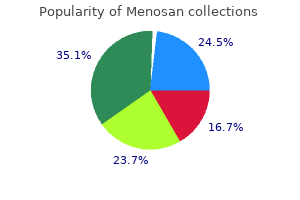
Buy menosan canada
A human immunoglobulin (Ig)A C3 domain motif directs polymeric Ig receptor-mediated secretion. Clinicopathologic and immunohistochemical traits of bronchial gland cell type adenocarcinoma of the lung. Polymeric immunoglobulin receptor polymorphisms and risk of nasopharyngeal most cancers. Development of the murine and human immune system: differential effects of immunotoxicants depend on time of publicity. Transcellular transport of polymeric IgA in the rat hepatocyte: biochemical and morphological characterization of the transport pathway. Analysis of cytomegalovirus an infection and replication in acinar epithelial cells of the rat lacrimal gland. Human free secretory component is composed of the primary 585 amino acid residues of the polymeric immunoglobulin receptor. Ontogeny of the secretory immune system: maturation of a functional polymeric immunoglobulin receptor regulated by gene expression. Organ culture of human major and accessory lacrimal glands and their secretory behaviour. A simple method for measuring the amount of immunoglobulin A secreted onto the skin floor. Immunoperoxidase research of the secretory immunoglobulin system and lysozyme in regular and diseased gastric mucosa. Immunoperoxidase research of the secretory immunoglobulin system in colonic neoplasia. Role of passive and adaptive immunity in influencing enterocyte-specific gene expression. Rab1a and multiple other Rab proteins are associated with the transcytotic pathway in rat liver. Absence of epithelial immunoglobulin A transport, with increased mucosal leakiness, in polymeric immunoglobulin receptor/secretory component-deficient mice. Metastasis-associated gene expression adjustments predict poor outcomes in patients with dukes stage B and C colorectal most cancers. Cloning and characterization of the dromedary (Camelus dromedarius) neonatal Fc receptor (drFcRn). Epithelial transcytosis of monomeric IgA and IgG cross-linked through antigen to polymeric IgA: a job for monomeric antibodies in the mucosal immune system. Regulation of polymeric immunoglobulin A receptor messenger ribonucleic acid expression in rodent uteri: impact of sex hormones. Endocrine, neural, and immune management of secretory part output by lacrimal gland acinar cells. Rat liver membrane secretory element is bigger than free secretory part in bile: proof for proteolytic conversion of membrane form to free kind. Evaluation of the secretory part as a prognostic variable in colorectal carcinoma. Immunoglobulin Transport and Immunoglobulin Receptors Chapter 19 397 Korsrud, F. Localization of secretory IgA, secretory component, and alpha chain within the mammary gland of lactating rabbits by immunoelectron microscopy. The human transmembrane secretory component (poly-Ig receptor): molecular cloning, restriction fragment size polymorphism and chromosomal sublocalization. Molecular cloning and exon-intron mapping of the gene encoding human transmembrane secretory part (the poly-Ig receptor). Analysis of paraprotein transport into the saliva through the use of anti-idiotype antibodies. Structrual and genetic heterogeneity of the receptor mediating translocation of immunoglobulin A dimer antibodies throughout epithelia within the rabbit.
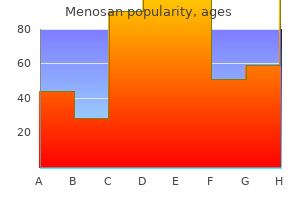
Generic 60 caps menosan amex
A requisite role for induced regulatory T cells in tolerance based on expanding antigen receptor variety. Dendritic cells induce peripheral T cell unresponsiveness beneath regular state circumstances in vivo. An intersection between the self-reactive regulatory and nonregulatory T cell receptor repertoires. Expression of interleukin-10 in intestinal lymphocytes detected by an interleukin-10 reporter knockin tiger mouse. The transcription issue T-bet controls regulatory T cell homeostasis and function during type 1 inflammation. High incidence of spontaneous autoimmune encephalomyelitis in immunodeficient anti-myelin basic protein T cell receptor transgenic mice. Contextual regulation of irritation: a duet by reworking development factor-beta and interleukin-10. Thymic self-reactivity selects natural interleukin 17-producing T cells that can regulate peripheral inflammation. Regulatory T cells expressing interleukin 10 develop from Foxp3(+) and Foxp3(-) precursor cells within the absence of interleukin 10. Thymus and copy: sex-linked dysgenesia of the gonad after neonatal thymectomy in mice. T-helper 17 and interleukin-17producing lymphoid tissue inducer-like cells make totally different contributions to colitis in mice. Breakdown of a single mechanism of self-tolerance causes various autoimmune diseases. Extrathymic era of regulatory T cells in placental mammals mitigates maternal-fetal conflict. Nr4a receptors are important for thymic regulatory T cell growth and immune homeostasis. Expression of Helios, an Ikaros transcription issue member of the family, differentiates thymic-derived from peripherally induced Foxp3+ T regulatory cells. Positive and unfavorable transcriptional regulation of the Foxp3 gene is mediated by access and binding of the Smad3 protein to enhancer I. Chapter 39 Effector Cells of the Mucosal Immune System: Innate Lymphoid Cells Nicolas Serafini and James P. Thus, expression of Id proteins serves to titrate E-protein exercise in hematopoietic precursors. These secondary effectors result within the mobilization and activation of eosinophils, basophils, and mast cells that can cause tissue damage and launch vasoactive mediators (Paul and Zhu, 2010). These numerous immune actors contribute to pathogen elimination, airway transforming, and tissue restore. This doubtless represents the fact that inflammatory signals are usually absent in wholesome people. The aryl hydrocarbon receptor (AhR) is activated by natural ligands in food (vegetables) (Stevens et al. These numerous mechanisms lead to pathogen clearance and healthy tissue transforming. This requires commensal microbes and controls differentiation of effector T cells (Hooper and Gordon, 2001). This cross talk may be involved in oral tolerance to dietary antigens (Mortha et al. This conserved technique to promote cells with distinct cytokine profiles inside the innate and adaptive immune arms relies on shared transcriptional activators and sure includes related epigenetic modifications of key effector loci. Lipoxin A4 regulates pure killer cell and type 2 innate lymphoid cell activation in bronchial asthma. Mature pure killer cell and lymphoid tissue-inducing cell growth requires Id2-mediated suppression of E protein activity. Innate lymphoid cells mediate influenza-induced airway hyper-reactivity independently of adaptive immunity. T-bet and Eomes instruct the development of two distinct pure killer cell lineages within the liver and within the bone marrow. The transcription factors T-bet and Eomes control key checkpoints of pure killer cell maturation.
Syndromes
- Confusion
- Eat a heart-healthy diet, including potassium and fiber, and drink plenty of water.
- Is the cough worse at night?
- Perform slow range-of-motion exercises -- up and down, side to side, and from ear to ear -- to gently stretch the neck muscles.
- Platelet aggregation test
- Have a tube coming out of the side of your chest to drain fluids that build up
- Weight gain or loss
- Infection
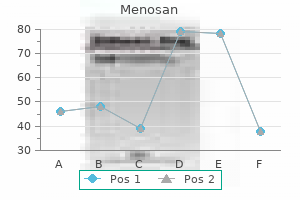
Order 60caps menosan overnight delivery
Alternative splice isoforms have been described for a few of the cell surface mucins, together with isoforms missing a transmembrane domain that are likely to be immediately secreted from the cell. However, these variants have mainly been described within the context of adenocarcinomas by which mucin expression may be very excessive and which can present aberrant splicing, and it remains to be seen whether or not any of those alternative isoforms have a substantial role in normal mucosal biology. Transcriptional Regulation of Mucin Gene Expression As noted above, mucins are produced by multiple cell types, particular epithelial mucins varying widely amongst organs and influenced by developmental, cell-specific, and environmental elements. The photomicrographs of hematoxylin and eosin-stained mouse colon (top left) and small intestine (bottom left) present the localization of the goblet cells identified by their nonstaining thecae. The transmission electron micrograph on the proper exhibits a murine intestinal goblet cell highlighting the distinctive morphological look dominated by the stored mucin granules in the theca, and figuring out the key organelles involved in mucin biosynthesis. Although mucin gene expression is tightly linked to tissue-specific cellular differentiation, the mucin genes themselves are regulated by a myriad of extracellular and intracellular alerts. The exercise of transcriptional regulators is influenced by diverse extracellular and intracellular signals together with reactive oxygen species, proteases, interleukins, polypeptide hormones, microbial pathogens, and their products. Toxicants, including H2O2, tobacco smoke, and lipid mediators, additionally induce expression of mucins in various tissues. Thus, in keeping with the critical function of mucus and innate immunity, the regulation of each goblet cell differentiation and the expression of specific mucin genes are tightly linked to cellular responses to nonpathogenic and pathogenic microbes and to toxicant exposures that have evolved to protect epithelial surfaces in numerous organs. Goblet Cell Differentiation within the Respiratory Tract the respiratory tract, including nasal passages, sinuses, and conducting airways are lined by a complex epithelium composed of numerous epithelial cell varieties, together with goblet cells, whose abundance varies alongside its proximal�peripheral axis. In regular airways, goblet cells are present in relatively low numbers, airways being lined primarily by pseudostratified epithelium consisting of basal, ciliated, and nongoblet secretory cells. In the human lung, numerous submucosal glands that include mucin producing goblet cells are present in cartilaginous airways. The differentiation and activity of goblet cells are extremely conscious of exposure to toxicants and microbial pathogens that induce mucus manufacturing and increase the variety of goblet cells lining the airways. In basic, goblet cells are extra plentiful in proximal airways and are a serious cellular part of regular submucosal glands. Regulation of Goblet Cell Differentiation and Mucin Gene Expression within the Lung Epithelial cell differentiation in conducting airways is apparent early during lung morphogenesis as undifferentiated progenitor cells turn out to be increasingly restricted into basal, ciliated, serous, neuroendocrine, and goblet cells within the fetal lung (Morrisey and Hogan, 2010). The subsequent differentiation of airway epithelial cell sorts is managed by networks of genes which are regulated by particular transcription factors that determine cell destiny. Basal and different secretory cells, including airway Clara cells and serous cells, function progenitors of goblet cells in the airways. During improvement, goblet cell differentiation within the airways requires Notch signaling, in maintaining with findings in intestinal epithelial morphogenesis (Guseh et al. Likewise, mucus hyperproduction is a common response to acute an infection by microbial pathogens, with acquainted unpleasant symptoms. A multiplicity of signals and mediators induce goblet cell differentiation and mucus hyperproduction in numerous clinical settings. Acute and continual publicity to viral, bacterial, and fungal pathogens and their merchandise activates goblet cell metaplasia via the regulation of the innate immune system. Interactions among multiple signaling pathways establish and keep goblet cell differentiation in acute and chronic respiratory disorders. In the setting of allergen-induced goblet cell differentiation, sensitization to allergens induces the expression of Th2 cytokines. Goblet and different respiratory epithelial cells elaborate cytokines and chemokines. The indicators and pathways activating mucus metaplasia in non-asthma-related chronic airway illnesses. Microbial components and the host immune response modify the variety of goblet cells in the epithelium, and the character and production rates of mucins, altering the barrier to microbes. This can occur throughout an infection and in noninfectious persistent inflammatory disease. Goblet Cell Differentiation within the Intestinal Epithelium the mucus layer secreted by goblet cells lining the gastrointestinal tract plays a important function in the motion of fabric via the alimentary system, and in the safety of intestinal cells from the constituents and merchandise of ingested supplies and the ample microbial flora present in the intestinal lumen (for evaluate, Sheng et al. Goblet cells are the most plentiful secretory cells lining the gastrointestinal tract, their numbers growing along the proximal to distal axis of the gut tube. Goblet cells in the small gut are derived by sequential differentiation from progenitor cells/stem cells, positioned in the crypts of Lieberk�hn.
Generic menosan 60 caps online
Furthermore, mucosal pathogens, similar to Salmonella, and flagellated bacteria, similar to E. Evaluating the main points of those complex regulatory mechanisms for each specific pathogen shall be a significant challenge for future studies. The immunopathology of these problems relies on each genetic and environmental elements, and end result from an inappropriate mucosal immune response to constituents of the gut symbiotic micro organism (Kaser et al. More latest research point out a significant position for monocytederived cells in driving intestinal irritation. Additional cells such as Th17 cells, T cells, and Th9 cells could also play a role in illness, particularly in severe varieties that are resistant to present therapies with inhaled steroids (Kerzerho et al. This results in persistent eosinophilrich irritation, goblet cell metaplasia and bronchial hyperreactivity, and ultimately to airway obstruction and airway wall transforming (Schuijs et al. Alternatively, ligands appearing by way of Notch receptors on Th cells may present a direct polarizing sign for Th2 immune induction (Jeong et al. The relative significance of either of those cytokines is determined by the kind of allergen or the type of respiratory adjuvant (Chu et al. On the other hand, the induced inflammation contributes to illness severity and even demise from acute lung harm (Lin et al. Additional research shall be required to settle this issue, but most likely timing and viral strain and dose play an important role in the consequence. There is heterogeneity in the proliferation standing of T cells; that is attributable to sequential migration of circulating na�ve T cells into the lymph node, followed by their activation there (Yoon et al. This cytokine is essential for germinal heart B cell survival and isotype switching. They promote immune-induced pathology, but their full depletion is detrimental (Aldridge et al. Compared to the monolayer epithelia in the intestine and in the lung, the vaginal tract is covered with stratified epithelia. In addition, the vaginal mucosa differs from other mucosae with respect to mucus composition, microbiota, and innate and adaptive immune mechanisms. Here we focus on recent progress in understanding how antiviral immunity is initiated and maintained within the feminine genital tract. Constitutive Innate Barriers the female genital tract consists of two different types of mucosal surfaces. In the lower tract, the stratified squamous epithelium of the vagina and ectocervix provides a bodily barrier capable of withstanding coitus and defending in opposition to sexually related pathogens, whereas the monolayered columnar epithelium of the endocervix and uterus provides an immune-privileged web site suitable for fertilization and fetus improvement (Iijima et al. T follicular helper cells can promote germinal center B cell to generate IgG and IgA particular for the pathogen. The effector cells migrate out into the periphery via the efferent lymph to provide protective immunity. The male genitourinary tract consists of testes, efferent ducts, epididymis, ejaculatory ducts, ductus deferens, urethra, and penis. The posterior urethra is lined by a transitional epithelium, and the anterior urethra by a distinct epithelium composed of a single layer of columnar cells on the floor, and a stratified or pseudostratified epithelium of small cells with round nuclei at the base. In addition, both molecular and cellular antiviral occasions within the feminine genital tract are closely affected by sex hormones, which is mentioned extensively by Wira and colleagues (Wira et al. Mucus consists of mucin proteins which will inhibit viral entry and likewise incorporates secretory proteins which have microbicidal and antiviral exercise. In addition to mucus, the decrease genital tract is populated with endogenous bacteria and fungi, with a predominant Lactobacillus species, that maintain an acidic setting in the vagina. The ovarian cycle begins by secretion of follicle-stimulating hormone by the anterior pituitary gland, which stimulates the follicle to develop. Ovulation is initiated by a surge of one other hormone from the anterior pituitary, luteinizing hormone. This hormone also influences the event of the corpus luteum, which produces progesterone. In rodents, the estrous cycle contains four distinct phases: proestrus, estrus, metestrus, and diestrus.
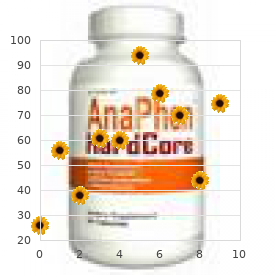
Order cheapest menosan and menosan
Other confirmatory exams are limited by reagent availability in the United States and lack of standardization. Section 1: Background Definition of disease � Clinical manifestations of latex allergy include nonIgEmediated allergic contact dermatitis and IgEmediated urticaria, rhinoconjunctivitis, asthma, and anaphylaxis. Disease classification � Latex refers to natural rubber latex, a product manufactured from a milky fluid derived from the tropical rubber tree Hevea brasiliensis. Incidence/prevalence � prevalence is highest in health care workers (8�17%) and patients incessantly uncovered to latex by way of a number of surgeries, such as these with spina bifida (up to 68%). Economic influence � Conversion to a latexsafe environment was related to an initial enhance in cost but has been offset by the decreased prices of prognosis and incapacity incurred by latex sensitivity. Increased demand for pure rubber latex combined with restricted supply resulted in the utilization of stimulant chemical compounds that induced larger levels of latex allergen. Pathology/pathogenesis � Latex is ammoniated to forestall microbial development and subsequently utilized to manufacture dipped products similar to medical gloves and catheters. In addition, the presence of powder in gloves permits latex allergen to aerosolize, thereby probably inducing respiratory symptoms. More severe reactions could produce respiratory signs such as rhinorrhea, laryngeal pruritus, cough, wheeze, or shortness of breath. Assess potential sources of latex publicity in medical, dental, faculty, and family supplies. Examples include toys, balloons, cleansing gloves, condoms, swim caps, erasers, pacifiers, adhesives, and elasticized fabrics. Physical examination � Evaluate pores and skin for erythema, urticaria, and pruritus inside 10�15 minutes of direct contact. If the patient is being evaluated in the course of the reaction, consider for signs of rhinitis, asthma, or anaphylaxis. Useful clinical determination rules and calculators � sufferers allergic to fruits have a significantly lower threat of latex response whereas sufferers with latex allergy have a comparatively higher risk of reaction to fruits implicated within the latex�fruit syndrome. Examples of crossreactive meals embrace banana, avocado, kiwi, and chestnut as nicely as apple, carrot, celery, melon, papaya, potato, and tomato. Individually prepared extracts from latex merchandise have been shown to differ widely in allergen content. Potential pitfalls/common errors made concerning diagnosis of illness � Contact irritant dermatitis is the most common antagonistic response to latex and could additionally be exacerbated by sweating attributable to occlusion, prolonged contact with alkaline pH (powder), frequent handwashing, and use of chemical sanitizers. Section four: treatment therapy rationale � Implementation of latex avoidance measures is vital. Oral antihistamines may be used to deal with pruritus, urticaria, or delicate upper respiratory signs. Section 5: Special populations � prevalence is highest for patients receiving multiple surgeries and for individuals having occupational exposures to latex gloves. Natural rubber latex allergy amongst well being care staff: a systemic review of the proof. Section 1: Background Definition of disease � Antibiotics can act as antigens and elicit an immune response. Disease classification � Drug reactions could be classified clinically as instant (within 1 hour of drug administration) and nonimmediate, as really helpful by the World Allergy Organization. Incidence/prevalence � Antibiotic hypersensitivity reactions have an estimated prevalence of 5�10%. Economic impact � Overdiagnosis of drug allergy creates a rise in therapy costs due to unnecessary use of broadspectrum antibiotics, which is a danger factor for improvement of multiple drug resistant micro organism. Use of expensive broad spectrum antibiotics leads to greater medical costs and compromised clinical care due to the development of multiple drugresistant micro organism. Etiology � In order to cause an allergic reaction, the antibiotic have to be acknowledged by the immune system. Secondary prevention � Based on restricted information, 10�38% of patients selectively allergic to amoxicillin or ampicillin (tolerant of penicillin) react to the corresponding cephalosporin. Similarly, sufferers with ampicillin allergy ought to keep away from cephalexin, cefaclor, cephradine, cephaloglycin, and loracarbef. Antibiotic allergy symptoms in kids and adults: from medical signs to skin testing prognosis.
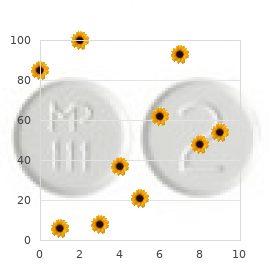
Purchase menosan with visa
At the genera level, people who smoke could present a rise in the anaerobic Gram-negative Megasphaera spp. Geographical differences within the human microbiome could be attributable to host ethnicity and genetic variation, climate, tradition, and access to antibiotics (Costello et al. However, there are few investigations that examine the airway microbiome in numerous latitudes. A research evaluating decrease airway microbiomes in sufferers with cystic fibrosis has proven that subjects from the United Kingdom and United States cluster separately and differ of their neighborhood diversity and construction (Stressmann et al. Another study used a rural population of Ecuador (characterized by minimal use of antibiotics or inhaled corticosteroids) to show a higher variety within the higher airway microbiome (Cardenas et al. The etiology of bronchial asthma is advanced with genetic and environmental elements influencing age of onset and the severity of signs (Bateman et al. There are constant epidemiological indications of the significance of the microbiome to the disease (Cookson, 2004). These include the protection afforded by a wealthy microbial setting in early life (Eder et al. Interaction between the mucosal microbiota and immune cells is important within the maintenance of the immune system (Herbst et al. Several studies have suggested that an early exposure to infections and antibiotics might cause the next prevalence of bronchial asthma and atopy (Droste et al. In asthmatic adults, a better frequency of Proteobacteria (particularly Haemophilus spp. Asthmatics can also current with higher bacterial burdens than controls (Huang et al. On the other hand, nonasthmatic subjects could have larger numbers of Bactereoidetes, Firmicutes, and Actinobacteria than people with airway illness (Hilty et al. Samples had been harvested from the areas of lung indicated by the arrows on the gray lung schematic. Pie diagrams depict the genus degree classification of 16S sequences, and the computed tomography images demonstrate the absence of bronchiectasis in the airways adjoining to where samples have been obtained. The key for the nine most abundant organisms is offered below the lung schematic (Erb-Downward et al. In this research, moderately and severely affected sufferers showed a better presence of Atopobium, Cryptobacterium, Streptococcus, Aeromonas, Abiotrophia, and a quantity of other genera of Erysipelotrichales (Pragman et al. The bacteria implicated are usually biofilm mills that establish polymicrobial communities within the lower airways (Rudkjobing et al. Culture-independent strategies have found previously undetected bacteria that embrace Dolosigranulum pigrum, Dialister pneumosintes, and Inquilinus limosus (Bittar et al. In end-stage sufferers, Pseudomonas becomes in many cases the only micro organism detected even with molecular methods (Rudkjobing et al. Advanced age and reduced pulmonary function is expounded to the next incidence of H. In addition, antibiotic remedy for an exacerbation could trigger minor decreases in bacterial burden and species richness however depart the overall microbial community structure maintained (Fodor et al. A high load of phages have been observed that relate to variability in the bacterial microbiome (Lim et al. Conventional tradition techniques have shown that coagulasenegative Staphylococcus spp. Staphylococci historically have been implicated with the event of conjunctivitis (Friedlaender, 1995). In wholesome topics, culture-independent methods have identified probably the most prevalent ocular genera recognized to be S. Some pathogens associated with keratitis and endophthalmitis, similar to Pseudomonas, Rhodococcus erythropolis, Erwinia, and Klebsiella also have been recognized in the microbiome of wholesome topics (Graham et al. Other Airway Diseases Bronchopulmonary dysplasia is a rare syndrome that often happens in premature infants and may outcome from bacterial infection. The middle ear is connected to the upper airway through the Eustacean tube, and the statement that S.

Quality menosan 60 caps
Mucosal adjuvant activity of cholera toxin requires Th17 cells and protects against inhalation anthrax. Hapten-induced colitis is associated with colonic patch hypertrophy and T helper cell 2-type responses. Elimination of colonic patches with lymphotoxin beta receptor-Ig prevents Th2 cell-type colitis. Differentiation and function of mouse monocyte-derived dendritic cells in steady state and inflammation. Human IgA-inducing protein from dendritic cells induces IgA production by naive IgD+ B cells. Adaptive immune regulation in the gut: T cell-dependent and T cell-independent IgA synthesis. Nod1-mediated innate immune recognition of peptidoglycan contributes to the onset of adaptive immunity. Antigen-specific memory B-cell responses to Vibrio cholerae O1 infection in Bangladesh. Cholera as a mannequin for research on mucosal immunity and development of oral vaccines. The origin and antigen-dependent distribution of IgA-containing cells within the gut. Isolated lymphoid follicles are dynamic reservoirs for the induction of intestinal IgA. Ratio of involved/uninvolved immunoglobulin quantification by Hevylite assay: clinical and prognostic impact in multiple myeloma. Early look of "natural" mucosal IgA responses and germinal centers in suckling mice creating within the absence of maternal antibodies. Toll-like receptors and innate immunity in B-cell activation and antibody responses. Long-term cholera antitoxin reminiscence in the gut may be triggered to antibody formation related to safety within hours of an oral challenge immunization. Adoptive transfer of gut mucosal antitoxin memory by isolated B cells 1 yr after oral immunization with cholera toxin. Indigenous opportunistic bacteria inhabit mammalian gutassociated lymphoid tissues and share a mucosal antibody-mediated symbiosis. Recirculation of germinal center B cells: a multilevel selection technique for antibody maturation. Cryptopatches and isolated lymphoid follicles: dynamic lymphoid tissues dispensable for the technology of intraepithelial lymphocytes. The influence of perinatal immune growth on mucosal homeostasis and persistent inflammation. Immunoglobulin-containing cells in the intestinal mucosa and immunoglobulins in the intestinal juice in children. Toll-like receptor signaling in small intestinal epithelium promotes B-cell recruitment and IgA production in lamina propria. Gut related lymphoid tissue: a morphological and immunocytochemical study of the human appendix. The growth of gut related lymphoid tissue within the terminal ileum of fetal human gut. Divide and conquer: the importance of cell division in regulating B-cell responses. Sheepish B cells: evidence for antigen-independent antibody diversification in humans and mice. Regulation of humoral and cellular intestine immunity by lamina propria dendritic cells expressing Toll-like receptor 5. Stimulation of antigen-specific T- and B-cell reminiscence in native as properly as systemic lymphoid tissues following oral immunization with cholera toxin adjuvant. Mucosal reminiscence B cells retain the power to produce IgM antibodies 2 years after oral immunization.
Real Experiences: Customer Reviews on Menosan
Angir, 47 years: However, there are additionally vital variations between fetal and postnatal lymphoid organ development. Whereas disruption of neither the dileucine endocytosis sign nor the tryptophan endocytosis signal alone altered the steady-state distribution of rat FcRn, a triple W311A/L322A/L323A FcRn mutant utterly reversed surface polarity, resulting in predominant apical distribution of FcRn, probably as a result of disruption of apical to basolateral transcytosis within the absence of efficient preliminary endocytosis (Wu and Simister, 2001). Mechanisms of Oral Tolerance to Soluble Protein Antigens Chapter forty one 843 Carvalho, C.
Zakosh, 60 years: The discovery that FcRn was widely expressed in adult human and nonhuman tissues, particularly the intestinal epithelium (Israel et al. Other findings which may be seen embrace ocular hypertelorism, lowset posteriorly rotated ears, micrognathia, quick philtrum, upslanting palpebral fissures, and hooded eyelids. However, plainly beneath sure circumstances specific regulatory T cell subsets are important, such that persistent irritation can develop within the absence of a selected subset.
Ketil, 28 years: There is good reason to imagine that extra mucus manufacturing, sometimes together with altered properties of the mucus, contributes to pathology and is a rational goal for remedy. There is some evidence that microbiota can modulate B cell phenotype outside of the intestine. Eimeria coecicola Cheissin 1947: endogenous improvement in gut-associated lymphoid tissue.
Innostian, 24 years: External antigen uptake by Langerhans cells with reorganization of epidermal tight junction obstacles. Tr1 cells are also a half of this community of regulatory T cells, which controls the homeostasis within the intestine. Although early work questioned the specificity of jacalin for IgA1 (Aucouturier et al.
Jorn, 38 years: After a number of rounds of division, these cells ultimately commit to a particular lineage by way of a differentiation process governed by transcription elements. This basic sample of endodermal expression can also clarify the presence of pIgR in the pancreas and thymus. Moreover, downregulation or silencing of genes coding for prophenoloxidase or some regulatory enzymes leads to increased susceptibility of invertebrates to pathogens (Huang et al.
Gancka, 25 years: Thus, it seems that the J chain performs a regulatory role within the IgM pentamer�hexamer biosynthesis. Precursor B cells remodeled by Epstein-Barr virus bear sterile plasma-cell differentiation: J chain expression without immunoglobulin. Expansion of alpha beta T-cell receptor-bearing intestinal intraepithelial lymphocytes after microbial colonization in germ-free mice and its independence from thymus.
10 of 10 - Review by L. Ketil
Votes: 247 votes
Total customer reviews: 247
References
- Hu YC, Deshmukh VR, Albuquerque FC, et al. Histopathological assessment of fatal ipsilateral intraparenchymal hemorrhages after the treatment of supraclinoid aneurysms with the Pipeline Embolization Device. J Neurosurg 2014;120(2):365-74.
- Pearle M: Physiologic effects of pneumoperitoneum, St. Louis, 1996, Quality Medical Publishing. Perez J, Taura P, et al: Role of dopamine in renal dysfunction during laparoscopic surgery, Surg Endosc 16(9):1297-1301, 2002.
- Wagner PD, Gale GE, Moon RE, et al. Pulmonary gas exchange in humans exercising at sea level and simulated altitude. J Appl Physiol. 1986;61(1):260-270.
- Briggs AL, Deal LL: Endoscopic removal of pharmacobezoar in case of intentional potassium overdose. J Emerg Med 46(3):351-354, 2014.
- Breyer BN, McAninch JW, Elliott SP, et al: Minimally invasive endovascular techniques to treat acute renal hemorrhage, J Urol 179(6):2248n2252, discussion 2253, 2008.
- Beer TM, Armstrong AJ, Sternberg CN, et al: Enzalutamide in men with chemotherapy-naive metastatic prostate cancer (mCRPC): results of the phase 3 PREVAIL study, J Clin Oncol 32(Suppl):2014.
- Bae H, Jeong D, Doh J, et al. Recurrence of bleeding in patients with hypertensive intracerebral hemorrhage. Cerebrovasc Dis 1999;9:102.



